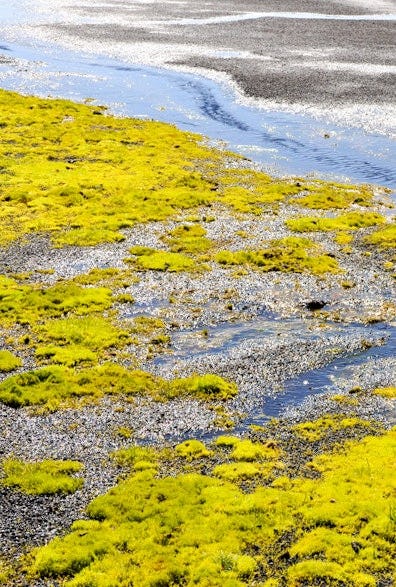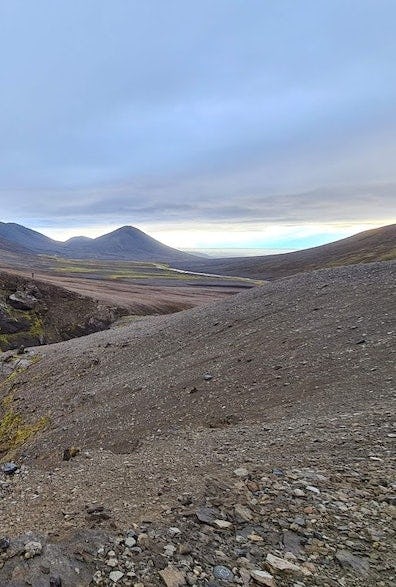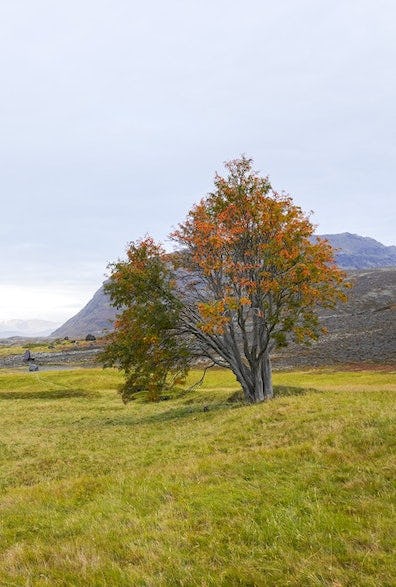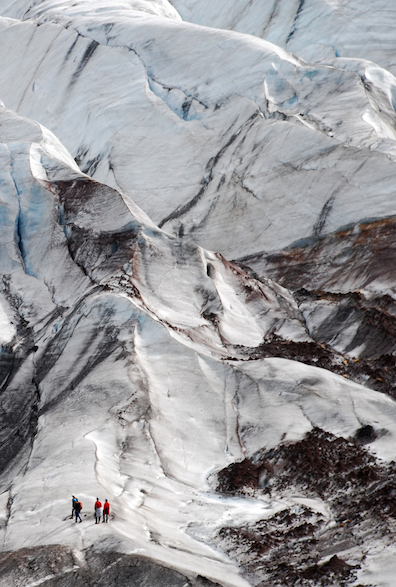Geology
The geological diversity within the Vatnajökull National Park is such that it could be called a geological national park. Vatnajökull National Park has active volcanoes, calderas, crater rows, lava formations and shield volcanoes, geological formations shaped by the interaction between volcanoes and glaciers, hyaloclastite ridges and table mountains, canyons carved out by glacial floods and glacial plains, and of course Vatnajökull glacier itself. The southeast part of the Park has extinct central volcanoes with plutonic rock intrusions and colourful rhyolite slides. Over millions of years, continental drift has moved them away from the volcanic zone around the centre of Iceland.

Interaction of fire and ice in time and space
Vatnajökull National Park is unique on a global level due to its geological history, which has been largely written by the protracted conflict between fire and ice. Many places can boast of volcanoes or glaciers, and some even have both, but nowhere else can you witness the struggle that rages between plate boundaries, mantle plume and plateau glaciers like in Vatnajökull National Park. The interaction between these phenomena and other land-shaping factors has resulted in the creation of a natural environment that is ever-changing and of a more diverse character than any other defined area in the world. Vatnajökull National Park offers the opportunity to experience the shaping of the earth in real time.
The hot spot, plate boundaries, the volcanic zone and volcanic activity in Iceland
There is a volcanic zone that divides Iceland between north and south due to the fact that the country is situated on the boundaries between two tectonic plates that are drifting apart. In this divide in the earth's crust there is a great deal of volcanic activity. Iceland is also a so-called hot spot, i.e. a place where a mantle plume rises from the bowels of the Earth. The centre of the mantle plume is thought to be located under the northwest part of Vatnajökull. Vatnajökull National Park has many of the most active and most powerful central volcanoes in Iceland, and also a number of extinct central volcanoes. Vatnajökull National Park therefore offers unique opportunities to get close to the diverse geological features of the volcanic zone.


Central volcanoes under the glacier
Seven out of the ten central volcanoes in Vatnajökull National Park are concealed under the ice cap of the glacier, and there are also extensive geothermal areas which constantly melt the glacial ice. Melting due to geothermal and volcanic activity can cause glacial flood outbursts and eruptions that tear through the ice cap, often resulting in volcanic ash dispersion. Volcanic eruptions and glacial floods are natural catastrophes that cause constant changes to the landscape and hugely impact human habitation all around the glacier.
A dynamic and ever-changing nature
The nature of Vatnajökull National Park is dynamic and constantly changing, and these changes occur in both time and space. The volcanic activity builds formations and the eroding effects from glaciers, water and wind break them down again. The young land keeps changing. Glaciers recede, glacial rivers flow forth and are diverted from their paths, ice dammed lakes form and expand or are drained. Vegetation spreads but in large areas it stays in its primary stages due to repeated erosion. In other places vegetation grows and flourishes for longer periods of time, and yet may eventually subside to natural erosive forces. Animal life depends on the vegetation that exists at each time, and human activity is influenced by the powerful and dynamic natural forces.




